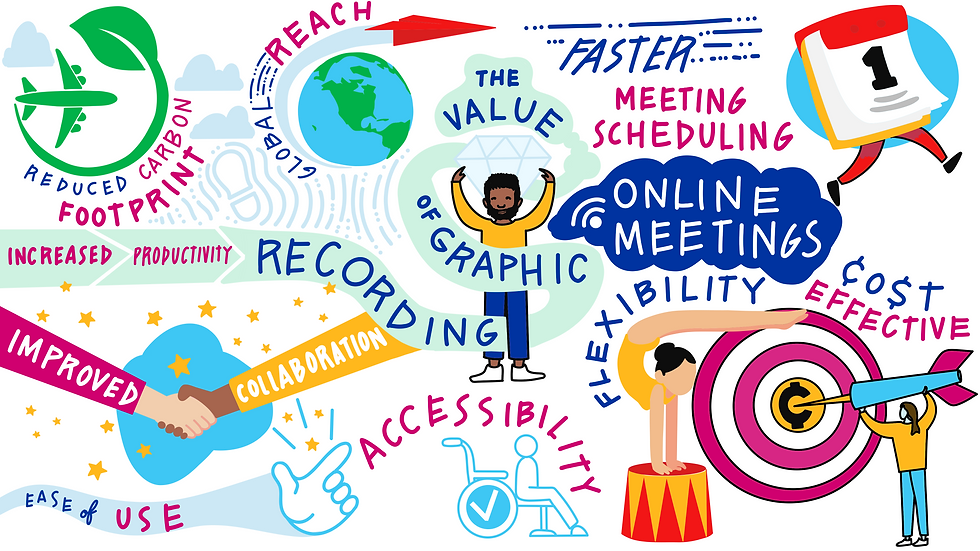Is Graphic Recording Dead?
- Kate Covey
- Oct 14, 2024
- 2 min read
Ok, ok, I know you've seen this before. I just saw an excellent post on LinkedIn on this very topic. I was trying to find it again, especially since it had comments like, "The Graphic Recorder is the first person we book on our team for our events." and "This is the most important role to get audience participation." etc. etc. Well, I could not find this person's post so I took to Google Generative AI assistant to answer this very important question for us.....and....drumroll...No, graphic recording is not dead, and in fact it has become more popular in recent years:
Remote graphic recording
The ability to record graphics remotely has become a popular way to capture concepts and strategies for businesses. Graphic recorders can participate in digital events and produce infographics that can be used immediately.
Digital graphic recording
Digital graphic recording offers a modern visual approach that can be streamed or shown in multiple rooms simultaneously. Digital notes can also be shared with attendees or on social media.
In-person graphic recording
In-person graphic recording is an effective way to engage audiences through visual communication. It can be used at events such as corporate retreats, conferences, fundraisers, and more.
Adoption by major consulting firms
Many major consulting firms, including Ernst & Young, Capgemini, Accenture, Oliver Wyman, KPMG, McKinsey, Deloitte, and PricewaterhouseCoopers, have adopted graphic recording.
Graphic recording can help audiences remember messages long after they've been delivered. Most people only remember about a fraction of what they hear, but retention rates more than double if that information is paired with a relevant image.

The take-away is that no, Graphic Recording is not dead, but it is being modernized. To that point, people ask if I'm worried that a robot with take my job. I tell them that it can't for a few simple reasons:
Robots don't have emotions. They cannot read a room and emphasize the key themes through a hierarchy of text and visuals the way that a person can. They might not even get the wording right.
Robots don't have the in person presence and dexterity to do this...yet...and I'm not sure I will see this in my lifetime.
A colleague of mine shared a graphic recording run through a program to summarize a conversation in the style of our work and it was pure gibberish. It looked kind of cool but it made no sense.
The consensus? There is a lot of value in this work... and a robot has nothing on me.



Those of us who pioneered graphic facilitation are not altogether happy about this increased emphasis on meeting artifacts. The beautiful recordings do support memory and making persons who hold meetings look like they did something meaningful, but recording on the side does not involve the group very much and misses out the power of visual dialogue and alignment that comes when people can argue over how things are represented. If you want to understand graphic facilitation, look these up at grovetools-inc.com.